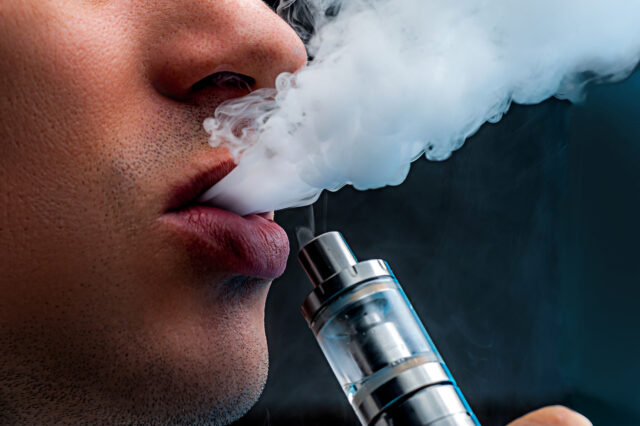Spurred on by the UK government’s plans to ban disposable vapes, vaping has become a subject of major public discourse.
While scientists and researchers point to the efficacy of e-cigarettes as a smoking cessation tool, policymakers are concerned about the use of vapes by people who have never smoked before.
But do the health benefits of giving up cigarettes outweigh concerns about the growing popularity of vaping? This article will explore this debate through the lens of harm reduction.
What Does Harm Reduction Mean?

Harm reduction, at its core, is about mitigating the negative consequences associated with certain behaviors, instead of focusing solely on the elimination of these behaviors.
In the realm of tobacco control, it takes into account the addictive nature of nicotine and seeks to provide safer alternatives to conventional cigarette smoking.
The entanglement of nicotine addiction and conventional cigarette smoking has been a public health quandary for decades. Nicotine, while highly addictive, is not the primary culprit behind the myriad of health issues associated with smoking.
Rather, it’s the combustion of tobacco that unleashes a horde of harmful and carcinogenic substances. Hence, the paradigm of harm reduction in tobacco control pivots on decoupling nicotine delivery from the harmful combustion process.
E-Cigarettes as a Harm Reduction Tool

Vaping technology arrived on the market as a revolutionary alternative to traditional tobacco products.
The allure of e-cigarettes lies in their ability to deliver nicotine in a manner that mimics smoking but without the combustion of tobacco leaves, which is responsible for producing many harmful and carcinogenic substances.
According to the NHS:
‘Evidence shows that vaping is substantially less harmful than smoking. Vaping exposes users to far fewer toxins and at lower levels than smoking cigarettes.’
Despite the promising prospects, it’s crucial to acknowledge the concerns surrounding vaping. Critics argue that the long-term effects are yet to be thoroughly understood. Additionally, there are policy makers’ concerns about vaping acting as a gateway to smoking, especially among the youth.
Moreover, regulatory inconsistencies across different regions impact the accessibility and perception of vaping as a harm-reduction tool.
It’s a complex landscape that requires a nuanced approach to ensure that vaping serves its harm-reduction purpose without inadvertently engendering new problems.
As the narrative around vaping and harm reduction continues to evolve, it’s imperative that rigorous research underpins policy decisions.
Ensuring that vaping products are regulated to maintain safety, while also providing a less harmful alternative for smokers is a delicate, but necessary balancing act.
The confluence of policy, research, and public awareness is crucial to harness the potential of vaping in the broader harm reduction strategy.
Conclusion
In conclusion, vaping stands as a compelling harm reduction tool, with the capability to significantly lower the risks associated with nicotine consumption.
However, it’s important to emphasize that vaping is a positive option only for former smokers who are looking for a tool to help them avoid cigarettes – it should not be used by people who have never smoked.
If you’re looking to switch to a vape kit and e-liquid for the first time, head over to Vaping 101. With a huge range of options for beginner vapers and long-term enthusiasts, they have everything you need for your journey.
This conclusion that vaping is considerably better for you than smoking is also backed up by research by the UK Office for Health Improvement and Disparities.








